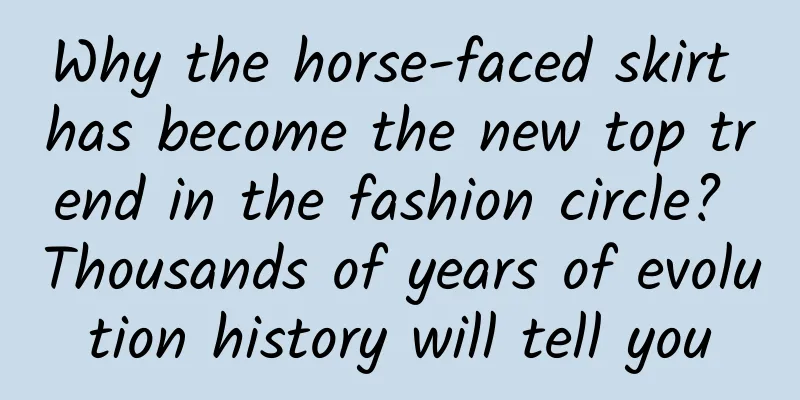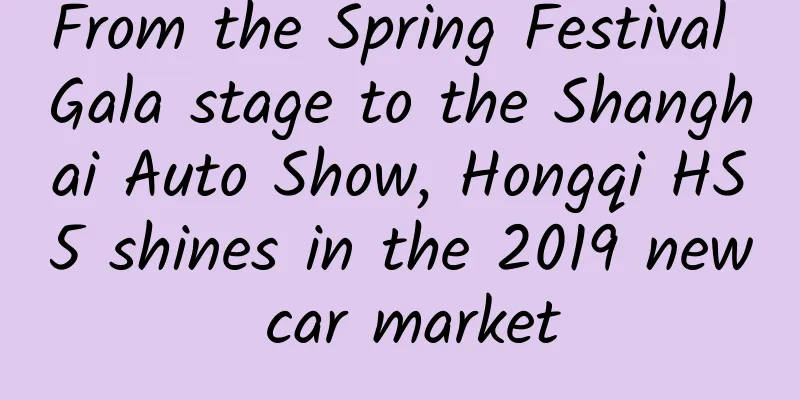Why the horse-faced skirt has become the new top trend in the fashion circle? Thousands of years of evolution history will tell you

|
Contemporary Society Wearing a horse-faced skirt for fun It has become a beautiful scenery in the streets and alleys With the simple beauty of the fusion of classic and modern The horse-faced skirt instantly became a popular New Year's battle suit For a time, demand exceeded supply In fact, Hanfu, represented by the horse-faced skirt, Widespread dissemination through social media It has long become a well-known hobby from a niche In this issue, we will reveal The history behind the horse-faced skirt Learn more about the charm of traditional Chinese clothing~ 01What is a horse-faced skirt? The horse-faced skirt, which is composed of a horse-faced skirt and pleats (jiǎn), is also known as the "horse-faced pleated skirt". It is one of the main representatives of ancient Chinese skirt styles. It took shape in the early Song Dynasty and was most popular during the Ming and Qing Dynasties. The term "horse-faced skirt" as a clothing item first appeared in the "History of the Palace of Ming Dynasty": "The back of the yisa is continuous, with swaying on both sides, the front is divided into two parts, and there are horse-faced pleats at the bottom, which rise to both sides." The horse-faced skirt is generally designed as a two-piece skirt, with smooth front and back and pleats on the left and right. It was originally a hip-opening skirt for women to ride donkeys. It became widely popular because of its wide skirt hem and flowing skirt width, which made it convenient for riding. 02Where does the name “Horse-faced” come from Image source: First Cultural Relics Restoration Research Institute "Ma Mian" originally refers to a kind of defense facility, also known as "wall battlement" or "pier". It is a defense facility that protrudes from the outside of the city wall and is built integrally with the city wall. Most of them are rectangular, and a few are square or semicircular. The width is generally 12 to 20 meters, protruding 8 to 12 meters from the city wall, and the spacing varies from 50 to 120 meters. Some of the mamian have watchtowers built on them; adjacent mamian and the city wall form a three-sided defense system. As a city defense facility, mamian was first seen in the Xiajiadian Lower Culture City Site in Inner Mongolia Autonomous Region, and gradually became popular in the Central Plains after the Three Kingdoms period. In the Tang and Song dynasties, most of them were built with rammed earth. In the Ming and Qing dynasties, as the city walls were covered with bricks, the outer skin of the mamian was covered with bricks. Skirt gate shape drawing source: First Cultural Relics Restoration Research Institute Because it is similar to the skirt gate, the horse face pleated skirt is commonly known as the "horse face skirt". The horse face skirt has four skirt gates inside and outside, two overlapped, the outer skirt gate is decorated, the inner skirt gate is less decorated or not decorated, the side is pleated, the waist of the skirt is mostly made of white cloth, which means growing old together, and is fastened with a rope or button. Horse-faced skirt-shaped drawing source CCTV News The horse-faced skirt is made of multiple pieces, and the skirt panels on both sides are pleated to fit the waistline of the human body. The skirt panels in the middle overlap to form a smooth surface. The overall shape of the horse-faced skirt is trapezoidal, narrow at the top and wide at the bottom. When spread out, it is fan-shaped. The more pleats there are on both sides, the larger the curvature of the fan-shaped skirt. 03History of the development of horse-faced skirt Song Brown Luo Print Pleated Skirt Image source: Chengdu Daily/Ding Qinghua "Taking the unearthed cultural relics from the Southern Song Dynasty Huang Sheng Tomb in Fuzhou as an example: the gorgeous clothes of aristocratic women in the Southern Song Dynasty" There have been many speculations about the origin of the horse-faced skirt. For example, some people believe that the horse-faced skirt was first developed from women's clothing in the Liao Dynasty, while others believe that the horse-faced skirt originated from the Xuan skirt of the Song Dynasty, that is, a two-piece skirt. The one-piece skirt made of multiple pieces can be traced back to at least the Shang Dynasty. Part of the "Picture of Capturing a Deer" from the Later Tang Dynasty of the Five Dynasties The picture depicts the use of open-crotch clothing on horseback. Image source: Old Summer Palace Ruins Park The skirts of the Song Dynasty already had the shape of a horse-faced skirt. The swivel skirt was a functional "open-hip skirt" designed by women in the Song Dynasty for the convenience of riding donkeys. Meng Hui said in "Slit Skirt": "This type of Song skirt is composed of two pieces of skirt with equal area and independent of each other. When making the skirt, the two pieces are partially overlapped and then sewn to the waist of the skirt." The spiral skirt of the Song Dynasty gradually developed into the horse-faced skirt in the Ming Dynasty. Because the smooth surface formed by the overlapping central skirt gates and the symmetrical pleats on both sides resembled the "horse face" defensive building in the ancient city wall, it was called the "horse-faced skirt". Part of "Emperor Xianzong of Ming Dynasty Enjoying Lantern Festival" from Ming Dynasty The concubines and palace maids in the picture are all wearing typical horse-faced skirts, which shows that the form of horse-faced skirts was mature at that time. Image source: Yuanmingyuan Ruins Park/Research on the Shape, Structure and Decorative Craftsmanship of Horse-faced Skirts in the Qing Dynasty During the Ming Dynasty, most people in the capital liked to wear horse-faced skirts, from the mother of a country to the common people, but different classes had strict differences in the texture, decoration and color of the horse-faced skirt. For example, the "star collection" of the Shandong Museum - a blue satin skirt with four-season flowers and gold embroidery, combines wealth, elegance and luxury. It is a horse-faced skirt belonging to aristocratic women. It is generally inferred that it is the dress of the wife of Duke Yansheng (Duke Yansheng is the hereditary title of the eldest descendant of Confucius), or it may be worn by other noble women in the Confucius Mansion. Ming Dynasty Blue Four Seasons Flower Gold-woven Satin Skirt The weaving technology of this kind of brocade satin has reached a peak in the history of Chinese silk, so it is called the "benchmark" of the horse-faced skirt handed down from the Ming Dynasty. Image source: CCTV News/Shandong Museum The horse-faced skirt of the Ming Dynasty is often decorated with a skirt sash (a wide edge with various patterns on the bottom of the skirt and the knees, called a "sash"). The patterns are diverse and rich in meaning. Animal patterns such as dragons and phoenixes symbolize good luck and a happy marriage; among plant patterns, peonies represent wealth and chrysanthemums represent longevity. In addition, the horse-faced skirt of the Ming Dynasty was relatively simple, with large and sparse pleats, which were movable pleats. When they turned, they looked like moonlight, so it was also called "moonlight skirt". The Qing Dynasty was an era when the horse-faced skirt was popular. The women's clothing in the Qing Dynasty inherited the tradition of the Ming Dynasty. On the basis of inheriting the skirt style of the Ming Dynasty, through further evolution, the horse-faced skirt gradually developed into the daily wear of Han women in the Qing Dynasty and became the iconic skirt style of women in the Qing Dynasty. Qing Dynasty: Video Scroll of Mr. and Mrs. Weng The female figure in the picture is wearing a long dress with a stand-up collar and a blue skirt with three pairs of pleats. Image source: Tianshui Museum The most distinctive feature of the horse-faced skirt is embroidery. Noble women in the Ming and Qing dynasties would choose to decorate the skirt and edges with patterns of flowers and plants. Different patterns also symbolize different meanings. For example, the lotus symbolizes purity, pomegranates and grapes symbolize many children and good fortune, and lilies symbolize a happy marriage, etc., which also indirectly reflect the traditional Chinese cultural values. At the same time, the decorative meaning of the horse-faced skirt in the Qing Dynasty became increasingly strong. The side skirts were either pleated skirts made of fine pleats, or langan skirts decorated with vertical langan satin edges. The skirts were embroidered with rich patterns and the satin edges were decorated with exquisite patterns, all of which highlighted the exquisiteness of traditional Chinese women's needlework skills. The horse-faced skirt matured in the Qing Dynasty and was the most typical style of Han women's clothing during the Ming and Qing Dynasties, and continued until the Republic of China. With the change of times, the style of the horse-faced skirt has changed from the fresh and elegant style of the Ming Dynasty, to the gorgeous and rich style of the Qing Dynasty, and then to the dignified and simple style of the Republic of China, but its basic shape has been basically determined. Republic of China: Blue-backed phoenix wearing peony-embroidered skirt Image source: Tianshui Museum The style of the horse-faced skirt in the early Republic of China still inherited and developed the loose style, bright colors and complex craftsmanship of the Qing Dynasty, and began to integrate with foreign Western elements, reflecting the superb innovation ability and craftsmanship of Chinese women. “Because of its great etiquette, it is called Xia; because of the beauty of its clothing, it is called Hua.” Clothing is the carrier of Chinese civilization. It not only embodies external norms, but also reflects internal qualities. Therefore, China is known as the “country of etiquette and etiquette.” Nowadays, the "new Chinese style of dressing" has become popular, and the horse-faced skirt has gradually been integrated into daily life. It can be worn at work, shopping, dining and other occasions. Some designers also find inspiration from the patterns of the horse-faced skirt, and gradually integrate Hanfu elements into the development of modern clothing... This is the inheritance of Chinese aesthetics, and also the innovative fusion of traditional culture and modern life. Source: Chongqing Jiulongpo District Cultural Relics Management Office Audit expert: Li Xiaoying Sources: CCTV News WeChat Official Account, Chengdu Daily, Shandong Museum, Chuzhou Museum, First Cultural Relics Restoration Institute, "Research on the Shape, Structure and Decorative Craftsmanship of the Qing Dynasty Horse-faced Skirt", Ding Qinghua's "Taking the Cultural Relics Excavated from Huang Sheng's Tomb in the Southern Song Dynasty in Fuzhou as an Example: The Gorgeous Clothes of Aristocratic Women in the Southern Song Dynasty" Image sources: Photo Network, CCTV News, Shandong Museum, Tianshui Museum, Old Summer Palace Ruins Park, Chengdu Daily, National Costume Museum, First Cultural Relics Restoration Institute Statement: Except for original content and special notes, some pictures are from the Internet. They are not for commercial purposes and are only used as popular science materials. The copyright belongs to the original authors. If there is any infringement, please contact us to delete them. |
<<: “Moonquake”, is it an earthquake on the moon?
>>: Stop saying you are “old” all the time, because you will really get older the more you say it!
Recommend
The epidemic has slowed down the development of Apple's self-driving car, and it will not be available in 5 years
An insider said that Apple's car development ...
A talk on interstellar migration: Is it better to place humans in one cradle on Earth, or to put them in several baskets?
I often say that human beings are like a group of...
Android 5.0: Google strikes a balance between data and design
[[122991]] The launch of Android 5.0 means that G...
Dealers frequently go bankrupt, thousands of dealers have withdrawn from the network in five years, and 4S stores finally fell into their own "pig-killing plate"
Chinese netizens often come up with some brillian...
This "treasure" on the grassland really looks like the "Bull Demon King"!
On the roof of the world, the Qinghai-Tibet Plate...
iOS/iPad OS 14.8.1 released: Apple recommends upgrading all older iPhone models
Not long after the official release of iOS 15.1, ...
Tik Tok, Kuaishou or Bilibili? How do brands choose short videos?
Recently, Bilibili has become popular because of ...
Things about online game advertising | Insights into information flow advertising data
Online game advertising has a special position in...
Severe cases can be fatal! These 4 things may cause blood clots, which many people often do but have been ignored
In life, many people may not regard thrombosis as...
The King of Tops and Bottom: Generalized Trend Theory Practice 11
Introduction to the 11-part video resource of the...
Baidu direct e-commerce product selection and marketing practical skills!
This article contains: 1) Overview of the direct-...
Accenture: AI's impact on 16 industries and 12 economies
The gradual decline in corporate profitability ma...
The "super racetrack" of the microscopic world: China plans to build the world's most powerful "particle bumper car"
Produced by: Science Popularization China Author:...
Sony MDR-Z7M2: Fully wrapped listening experience, making music more vast
As a benchmark brand in the global audio industry...
Vaccination of “inhaled COVID-19 vaccine” has started. Why can the vaccine also be “inhaled”?
Since the end of October, many places across the ...









